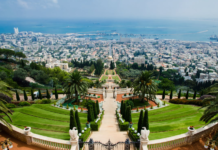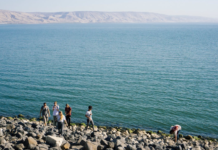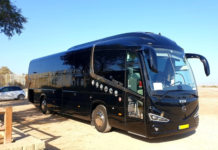Saudi Arabia is not just about the sacred cities of Makkah and Madinah, it is a land of profound spirituality and rich history. The kingdom is dotted with many other sites that are both visually stunning and culturally vital. Nowadays, the Ministry of Hajj and Umrah has enhanced the period for pilgrimage from 30 days to 90 days. So that, pilgrims can visit other sites in the Saudi state after performing the rituals of pilgrimage. Here, you will find a guide to the top 10 additional places to visit in Saudi Arabia during Ramadan your pilgrimage journey.
1. Jeddah’s Historical District (Al-Balad)
Back in the 7th century, this place was the center of Jeddah, serving as a key trading port and gateway for pilgrims heading to Makkah. The district’s unique coral stone buildings, adorned with intricate wooden balconies, reflect a blend of cultural effects. Indeed, visiting this place is like traveling through time. Al-Balad’s architecture showcases the Red Sea’s coastal traditions, merged with crafts from across the trade routes. Known by UNESCO, this place is undergoing restoration to preserve its magical legacy for future generations.
2. The Edge of the World (Jebel Fihrayn)
The name Jebel Fihrayn refers to the dramatic geological feature, known as the edge of the world. It is a cliff-top vista, located in the northwest of Riyadh, Saudi Arabia. Standing atop, you’re met with an endless horizon, where the sky seamlessly blends with the barren land below. This geological marvel is part of the Tuwaiq Escarpment, plunging 1,000 feet into an ancient seabed. No doubt, it is a famous spot to capture stunning sunset views. This place is also of immense historical importance. In the past, the old trade routes passed through its base, making it a land where natural beauty and history meet perfectly.
3. Al-Ula and Madain Saleh
Al-Ula, an oasis in the Saudi desert, is the gateway to the ancient city of Madain Saleh, also known as Hegra. Now it is one of the UNESCO World Heritage sites but once the southernmost settlement of the Nabatean kingdom, second only to Petra. This place is highly known for its well-preserved rock-cut tombs, showing a blend of different architectural styles and imprinted writings that reflect the diverse cultures that once thrived along the trade routes. Indeed, exploring this historical site offers a unique glimpse into the region’s history and helps pilgrims make unforgettable memories.
4. The Makkah Clock Tower
It is a landmark of modern Islamic architecture, towering over the holy city. It stands at 601 meters and is known among the world’s tallest buildings. This grand clock tower features a massive clock face that’s visible from miles away, serving as a beacon for pilgrims. Inside, it houses a luxury hotel and a museum dedicated to Islamic heritage. The tower is part of the King Abdulaziz Endowment Project, aimed at modernizing Mecca and accommodating its pilgrims. Indeed, it symbolizes the traditions and progress of Saudi land.
5. Mount Uhud
This historically and religiously significant site in Saudi Arabia is located near the sacred land of Madinah. This mountain is 1,077 meters tall and has witnessed the historical and pivotal battle of Uhud in 625 CE. It is the site where Prophet Muhammad (S.A.W.W) and his followers faced their opponents with bravery. Moreover, this place is also known for its natural beauty and the graves of the martyrs who fought in the battle. Now, Mount Uhud is a reflection for those visitors who want to pay tribute to the historical figures linked with it.
6. Jannat al-Mualla
Located in Makkah, this place is a historical cemetery where many relatives of Prophet Muhammad (S.A.W.W) are buried. It is known as the place of reverence, where pilgrims often reflect on the lives of these significant figures of Islamic history. Moreover, this graveyard is known for its calm atmosphere and is considered one of the holiest sites in Islam. Tourists can pay their respect and think about the contributions of these Islamic legends who shed their blood and sweat in shaping the early Muslim community.
7. The Floating Mosque (Al-Rahma Mosque)
Located in Jeddah, the floating mosque is also called the Al-Rahma mosque. It is built over the Red Sea and seems like floating on the water’s surface, particularly at high tide. Indeed, it is an architectural gem, featuring a white facade with a stunning aquamarine dome. This dome reflects traditional Islamic design with an advanced architectural twist. It is one of the very calm places for worship and contemplation. Thus, it is an attraction for many pilgrims and tourists alike. Moreover, the mosque’s location on the Jeddah Corniche makes it a perfect place to experience the coastal beauty and spiritual peace of the city. The Al-Rahma mosque is certainly a blend of natural beauty and faith.
8. Jabal al-Nour
It is also known as the “Mountain of Light” and is located near the sacred city of Makkah in Saudi Arabia. The famous Cave of Hira, where the Prophet Muhammad (S.A.W.W) received the first Quranic revelations is situated at this place. Moreover, the mountain’s peak offers a stunning view of the Makkah city, drawing the attention of pilgrims, belonging to different regions of the world. Though it has a modest height of 642 meters, it offers a challenging climb, with 1750 steps to reach the historical cave. No doubt, this journey is a spiritual quest for many people, looking forward to connect the profound history of the early Islamic days.
9. Taif
Taif, a city in Saudi Arabia, is known for its cool climate and lush scenery. Nestled in the mountains, it’s a summer retreat from the desert heat. Famous for its rose gardens and the annual Rose Festival, Taif is also a place of rich history. It has ties to early Islamic events and is a hub for agriculture, producing fruits like grapes and pomegranates. Tourists love visiting its bustling markets and cherish its natural beauty.
10. The King Fahd Fountain
The King Fahd Fountain, also known as the Jeddah Fountain, is a marvel in Saudi Arabia. Named after King Fahd, it’s the world’s tallest fountain, reaching a height of 312 meters. Visible across Jeddah, it propels water at 375 km/h. Remarkably, it uses Red Sea saltwater and is illuminated by 500 LEDs at night. Constructed between 1980 and 1983, it began operating in 1985.
For the time optimization and the meticulous planning of your pilgrimage trip, contact Muslims Holy Travel and make much out of your sacred trip.












